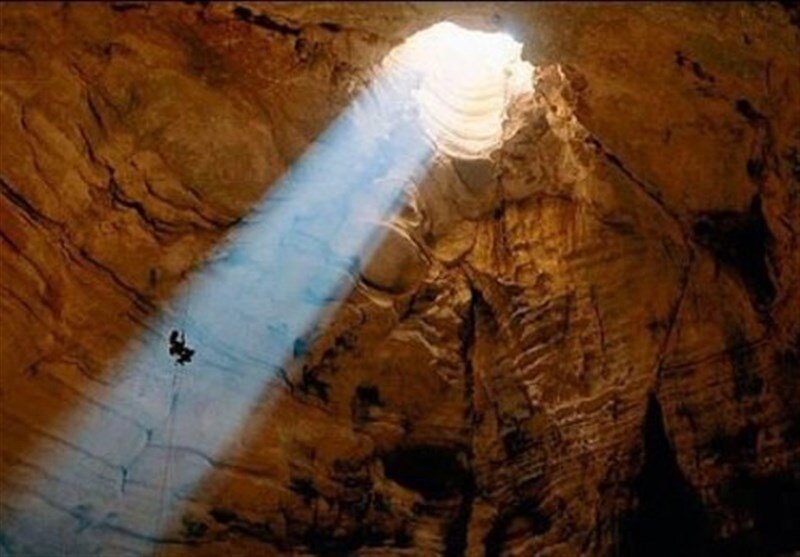Discover extremely deep cave in western Iran

TEHRAN - Ghar-e Parau, which is translated as "the cave full of water," is one of the deepest known caves in the world.
It has a mind-boggling depth of 750 meters. Think of nearly twofold the length of the Eiffel Tower stacked on top of one another underground to get an idea of how big that is!
Regular tourists and even amateur cavers should avoid exploring Ghar-e Parau. You must be well-equipped, have sufficient caving knowledge, and be proficient in rappelling techniques.
It is imperative to hire a qualified guide or join a qualified group. Going alone is completely impossible and dangerous, especially if it's your first time visiting this deep, slick cave.
Initially, a group from England explored the vertical cave. A team from Iran was able to explore the cave's entire length of 750 meters about 30 years later.
The cave is situated on a high mountain of the same name, close to the village of Chalabeh in western Iran.
In 1971, the British Speleological Expedition headed by John Middleton first discovered and investigated the limestone cave, which is situated high in the Zagros Mountains in Kermanshah province.
The British team enjoyed skilled cave divers. They had previously explored deep caves like Antro del Corchia in Italy, Gouffre Pierre St. Martin and Berger in France. The world depth record was already in their minds at the time, and they searched different karst regions in the Pyrenees, Italian, and Austrian Alps, as well as in Greece, Yugoslavia, the Canadian Rocky Mountains, Mexico, Peru, and the Himalayas.
In the summer of 1972, a follow-up expedition to the cave, which was led by David Judson, led to a new world depth record.
When a Polish team visited the cave in 1975, they were able to confirm once more that the cave was indeed complete after reaching the terminal sump.
The Iranian Mountaineering and Caving Clubs started going to the cave over the following year, frequently making it to the terminal sump and frequently discovering new passageways.
Yuri Evdokimov traveled to Ghar-e Parau in the winter of 2005–2006 with a small group of Russian cavers and descended to a depth of –400 meters. Ropes were kept inside the cave, and preparations were made to return in 2006 with a larger expedition after realizing that the cave and its surroundings still held great potential.
A nearby cave was found by a group of Iranian cave divers in 2014. The cave was known as Ghar-e-Ghala and was occasionally described as “the second deepest shaft” in the entire world. Less than six kilometers to the north of Ghar-e Parau and about 100 kilometers from the Iraqi border area where it is situated in the Parau massif.
AFM
